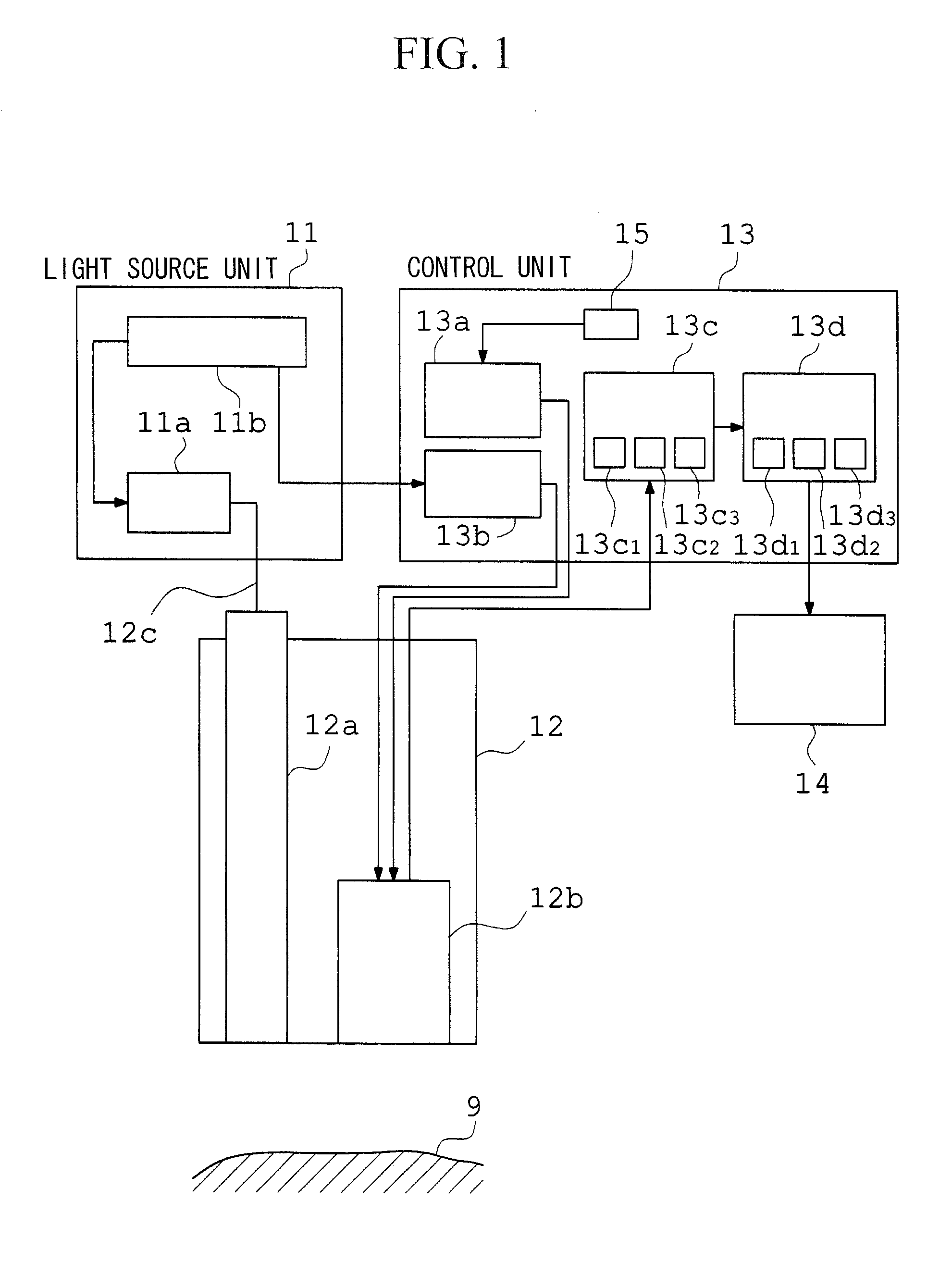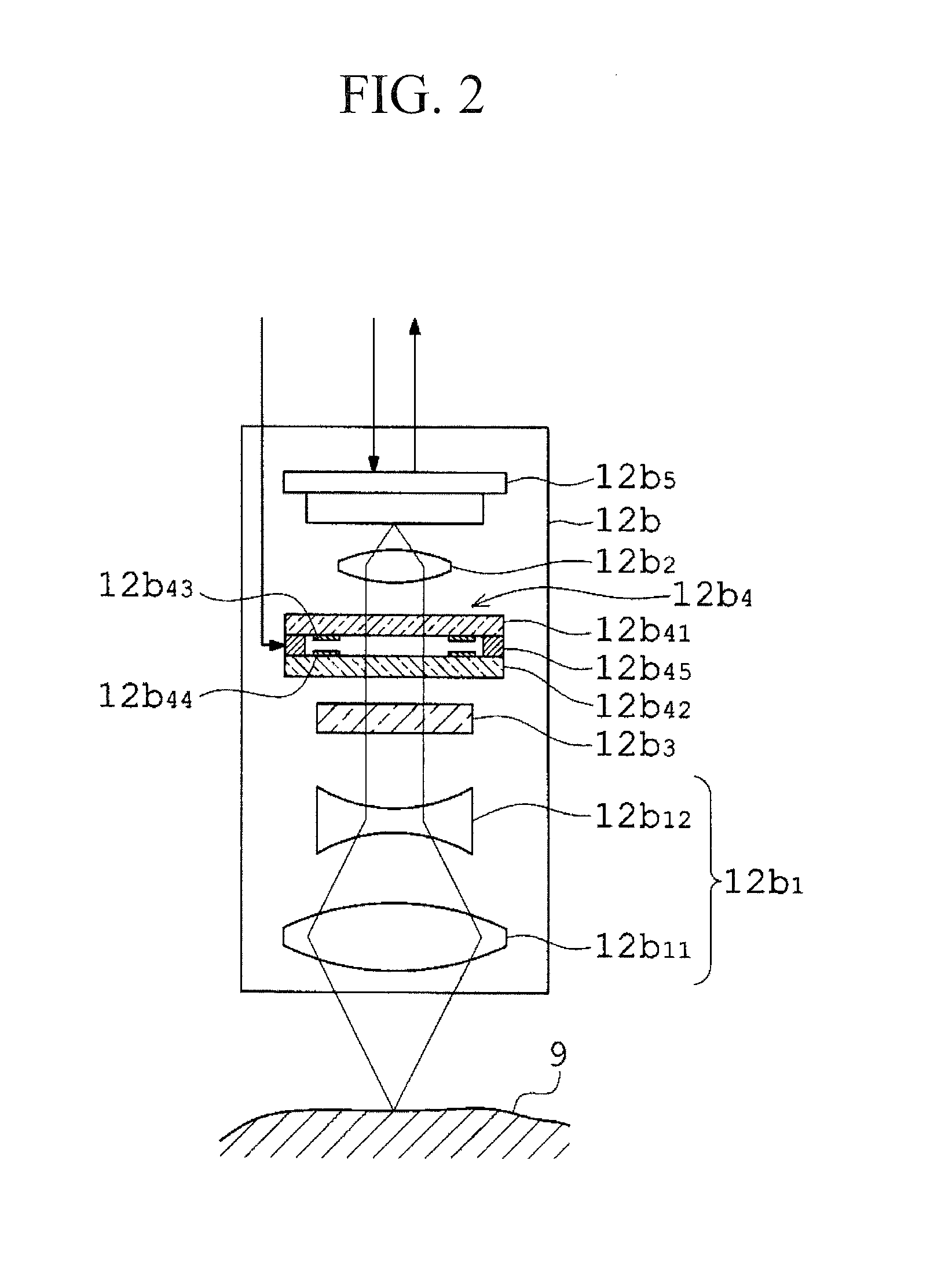Fluorescence-endoscope apparatus
a fluorescence endoscope and endoscope technology, which is applied in the field of fluorescence endoscope equipment, can solve the problems of too dark fluorescence images of the darker fluorescent components, the saturation of the fluorescence image of the excessively-bright fluorescent components, and the inability to detect the light intensity of the fluorescent components
- Summary
- Abstract
- Description
- Claims
- Application Information
AI Technical Summary
Benefits of technology
Problems solved by technology
Method used
Image
Examples
example 1
[0228]FIGS. 7A to 7E are explanatory diagrams showing the exposure conditions in the fluorescence-endoscope apparatus of Example 1 and computation performed by the fluorescent-component-density computation unit 13d2, where FIG. 7A is a diagram showing, in time-series, the light in each of the wavelength ranges selected by and transmitted through the tunable light-dispersing element 12b4 under the reference exposure conditions, FIG. 7B is a diagram showing, in time-series, the light in each of the wavelength ranges that has been, at substantially the same time as in FIG. 7A, photoelectrically converted through the image acquisition device 12b5 and stored in each of the frame memories 13c1, 13c2, and 13c3, FIG. 7C is a diagram showing, in time-series, the light in each of the wavelength ranges selected by and transmitted through the tunable light-dispersing element 12b4 under the exposure conditions in Example 1, FIG. 7D is a diagram showing, in time-series, the light in each of the w...
example 2
[0235]FIGS. 8A to 8C are explanatory diagrams showing the exposure conditions in the fluorescence-endoscope apparatus of Example 2 and computation performed by the fluorescent-component-density computation unit 13d2, where FIG. 8A is a diagram showing, in time-series, the light in each of the wavelength ranges selected by and transmitted through the tunable light-dispersing element 12b4 under the reference exposure conditions, FIG. 8B is a diagram showing, in time-series, the light in each of the wavelength ranges selected by and transmitted through the tunable light-dispersing element 12b4 under the exposure conditions in Example 2, and FIG. 8C is a diagram showing a matrix equation that is used in the UNMIXING processing performed by the fluorescent-component-density computation unit 13d2 under the exposure conditions shown in FIG. 8B.
[0236]With the fluorescence-endoscope apparatus of Example 2, as shown in FIG. 8B, the exposure conditions are changed through the exposure-conditio...
example 3
[0243]FIGS. 9A to 9C are explanatory diagrams showing the exposure conditions in the fluorescence-endoscope apparatus of Example 3 and computation performed by the fluorescent-component-density computation unit 13d2, where FIG. 9A is a diagram showing, in time-series, the intensity and the irradiation timing of each excitation light beam that excites the fluorescence wavelengths of the individual fluorescent components under the reference exposure conditions, FIG. 9B is a diagram showing, in time-series, the intensity and the irradiation timing of each excitation light beam that excites the fluorescence wavelengths of the individual fluorescent components under the exposure conditions in Example 3, and FIG. 9C is a diagram showing a matrix equation that is used in the UNMIXING processing performed by the fluorescent-component-density computation unit 13d2 under the exposure conditions shown in FIG. 9B.
[0244]With the fluorescence-endoscope apparatus of Example 3, as shown in FIG. 9B,...
PUM
 Login to View More
Login to View More Abstract
Description
Claims
Application Information
 Login to View More
Login to View More - R&D
- Intellectual Property
- Life Sciences
- Materials
- Tech Scout
- Unparalleled Data Quality
- Higher Quality Content
- 60% Fewer Hallucinations
Browse by: Latest US Patents, China's latest patents, Technical Efficacy Thesaurus, Application Domain, Technology Topic, Popular Technical Reports.
© 2025 PatSnap. All rights reserved.Legal|Privacy policy|Modern Slavery Act Transparency Statement|Sitemap|About US| Contact US: help@patsnap.com



